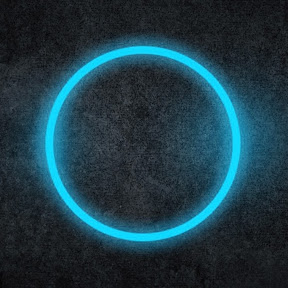It’s getting time to retire the old Apple Airport Time Capsule, and I’m looking recommendations on easy-to-use replacements. This would be used for general files and automatic laptop backups.
Requirements:
- At least 2TB
- Capable of archiving to an offline disk used as an off-site backup
- Easy enough for my parents to use
- Not crazy expensive if possible
I’ve never used a dedicated NAS, so I’m humbly seeking the opinions of the Lemmy experts. Thank you!
Dust off your old PC, put some hard drives into it and install Nextcloud on it.
An old PC is the best NAS, even if you choose a dedicated NAS box it’s likely that you’ll want to “upgrade” to an old PC in a year or two. Unlike premade NAS boxes you have full control over the software and can modify the hardware as needed. You can undervolt/underclock to save power too, so the main difference is only the physical space it takes. Having the ability to run docker containers and VMs on the same device is incredibly useful, and you’ll get significantly faster transfers despite the drastically lower cost.
“NAS” is just an acronym for “Network Attached Storage”. Companies have capitalized on that and will happily sell you a “do everything box”…Until you realize that it’s closed-source, overpriced, and underpowered garbage that will go EOL after a couple years, and might even lock you out of using non-approved drives coughSynologycough
A NAS is literally any computer that is setup to host storage that’s accessible over a network. That’s it. Don’t get suckered into overpriced underpowered crap. Dollar for dollar, literally any PC made in the last decade has more horsepower than a brand new “dedicated NAS”. Hell, a Pentium G4560T (i.e. 6th/7th gen Intel) will run OMV or TrueNAS or whatever without a hitch. Stuff an old ATX case with hard drives, load OMV or TrueNAS or something, and go to town.
Get a old workstation and put some drives in it
I’ve had synology, QNAP and a few DIY builds. I can tell you the diy route is better every time. They get a much longer life and lower costs.
If cheap is the most important thing and you don’t need more than 2 drives, consider an odroid HC-4. You can always 3D print a different shell for it if you want too. I made a cylinder Mac Pro shell for a friends dads build.
You can’t rely on mass produced NAS devices because they don’t support their stuff long term. It always blows up. And when the In go wrong in the short term, the support is trash tier. I once had a synology that would crash every time it went to sleep and it would ignore my attempts to sleep off. When I got hold of support, they told me to open the SSH port to the WAN for it and they would get to it in a week or 2. Damn thing was attacked instantly.
Never use an off the shelf NAS.
I will warn you against the mistake I made: DO NOT buy a WD MyCloud device.
They work okay, but you have zero control over what runs on the device. You will be limited if you want to run any apps that aren’t included.
Make sure whatever you end up getting, it has support for running docker containers if you even remotely think that’s a use case you want.
Came here just to say that. Avoid WD.
The WD devices also offer very limited long term support. The MyBook Live had a software exploit found a couple years after launch that allowed remote access to your files and enabled third parties to wipe your drives. Wd said “wow, that sucks, here is a $15 coupon for a new one. No, we aren’t gonna patch it. Buy a new one” I will never buy another wd device except for the raw discs.
Why even buy the raw discs? Their SSDs are trash (including their SanDisk offerings) and for hard drives seagate is perfectly fine. If I’m oka with high a cheap SSD, I’ll just buy an inland drive.
I have not kept up with their raw disk lineup to be honest, they may be garbo but I am not sure. I have been using toshiba and seagate drives for the last 8 years which have been great.
That’s not part of OP’s requirements, so I would recommend an appliance device like that. It does one thing, reasonably well, and has a non-technical interface to manage backups and restores.
Yeah, this all depends on how sure OP is in their requirements.
It works well as a (slow) Time Machine server but I did have to add a weekly reboot out flat it would get stuck.
But after buying my requirements changed and it couldn’t evolve to meet them, which is why I would warn against if there’s any chance you want to run out of the box services.
Have you considered a raspbery pi and an two external SSDs?
There is so much wrong with this
Like what
You might consider something like the friendly elec CM3588 for a DIY option with openmediavault or freenas. I have a big old box currently with spinning metal, but am looking at this as an option now that there are some larger m.2 drives available.
I had a two bay Synology device for many years before I upgraded to a home lab. I liked it quite a bit as a beginner. The interface was easy to use, dead simple to set up the basics, and it had some advanced capability for those curious.
I’d strongly recommend a “plus” model. They are usually only slightly more expensive than their non-plus counterpart for a fairly significant upgrade.
This is the correct answer. Very beginner friendly. Very capable of growing on from this. Great way to onboard beginners.
I started with a 2 bay Intel CPU Synology. Used it for a couple of years.used it to learn about Docker. When I started using too many Docker apps and Synology couldn’t keep up, then I got a mini PC for compute and kept the Synology as just a plain NAS.
People recommending manual options for any “make your own” solution is throwing someone way into the deep end. OP can do that if that’s what he’s up for. But my first recommendation to anyone would be to pick up a secondhand Synology and bookmark:
I have a Synology that does everything I need it to do and it is very simple and reliable. The new ones will restrict what hard drives they are compatible with to only HDDs certified by Synology, so I would not recommend one of those ones
Bingo. I’ve used Synology for ages and while they dont last forever, I get a lot of use out of them and re-buy them usually with an upgrade in mind.
But the new hard drive policy broke that cycle. I don’t put up with that. I replaced one with a UGreen NAS last month. It’s too early to tell how I feel about it. Docker is there and containers spin up pretty easily. Rumor has it there is hardware support for video encoding too, though I haven’t gotten around to testing it.
Bingo. I’ve used Synology for ages and while they dont last forever, I get a lot of use out of them and re-buy them usually with an upgrade in mind.
But the new hard drive policy broke that cycle. I don’t put up with that. I replaced one with a UGreen NAS last month. It’s too early to tell how I feel about it. Docker is there and containers spin up pretty easily. Rumor has it there is hardware support for video encoding too, though I haven’t gotten around to testing it.
I have a DS923+ with four Seagate 8TB drives in it that I really like. It’s easy to use and offers a lot of services.
However, like others have said, I do not recommend it for new purchases. If I were to do it again I would most likely set up an old PC as a server (though I went with the Synology mainly for power use reasons).
Synology is getting increasingly customer hostile, and from what I’ve read online their Linux version is so full of bespoke patches that they have painted themselves in a corner it will be hard to get out of. So, they’re likely to fall behind on keeping up with third party software. Their software is usually pretty slick and easy to use, but they discontinue things every few cycles.
The main thing I still use of theirs is Synology Drive, which was a pretty seamless move from Google Drive. On the flipside, their stuff is proprietary, so getting off of their platform can be challenging.
For my self-hosting needs I try not to tie anything to the Synology and just use it as a plain NAS. I use my Raspberry Pi or a VM instead.
Why not go truly selfhosted and build your own? Any PC + JBOD + ZFS, then add whichever services you need. NFS or SMB should get you a long way.
Plenty of guides out there on how to achieve this.
Ideally? I’d say something with support for 2 drives, mirrored.
Without a price to define “not crazy expensive”, I’d say take a look at QNAP and Synology 2-bay devices, pick what fits the price range. I’d put it on the network and mount it on the PCs you want to as a drive to drop things in.
Then I’d add one more thing - 3-2-1 for anything critical.
- Three copies of all critical data should be made on a regular basis. Original data + at least two backups
- Two different storage types should be used to store the data to minimize the chance of failure.
- One offsite location. Could be an encrypted copy of a backup on cloud storage, could be a drive at another home.
How critical data is would be up to you and your parents, I just want to note that a single backup at your home is not going to be helpful if there is flooding or a fire or whatever that would damage both the originals and the backup device.
Beelink ME Mini
If you want low effort high value then get a synology 2 bay. If you want full control over the host OS then run Debian/arch with zfs
What I would personally do is get a standard pc, anything that you can plug sata hard drives into and get for cheap, get two hard drives of whatever size you deem necessary, and then put them in raid 1, this means that both drives are a copy of eachother, so if one dies the data is okay.
You can put whatever software you want, but I would need more info on what you want to do with it to give recommendations there. ie: general file storage only, or also stuff like online document editing? Backups from what kind of system? Only macs or something else too? How technical are you for setup and stuff?
so if one dies the data is okay.
RAID1 doesn’t protect you against bitrot, config errors from 4 months ago, or a power failure that fries the whole machine.
The reason they say “RAID is not a backup” is that it is not a safeguard against the above.
Well yeah ofc, the op stated they would also have an offsite backup, so I figured I didn’t have to specify
Fair enough.
Depends how attractive it needs to be. “Entry level” could be an old PC you kave kicking around.










